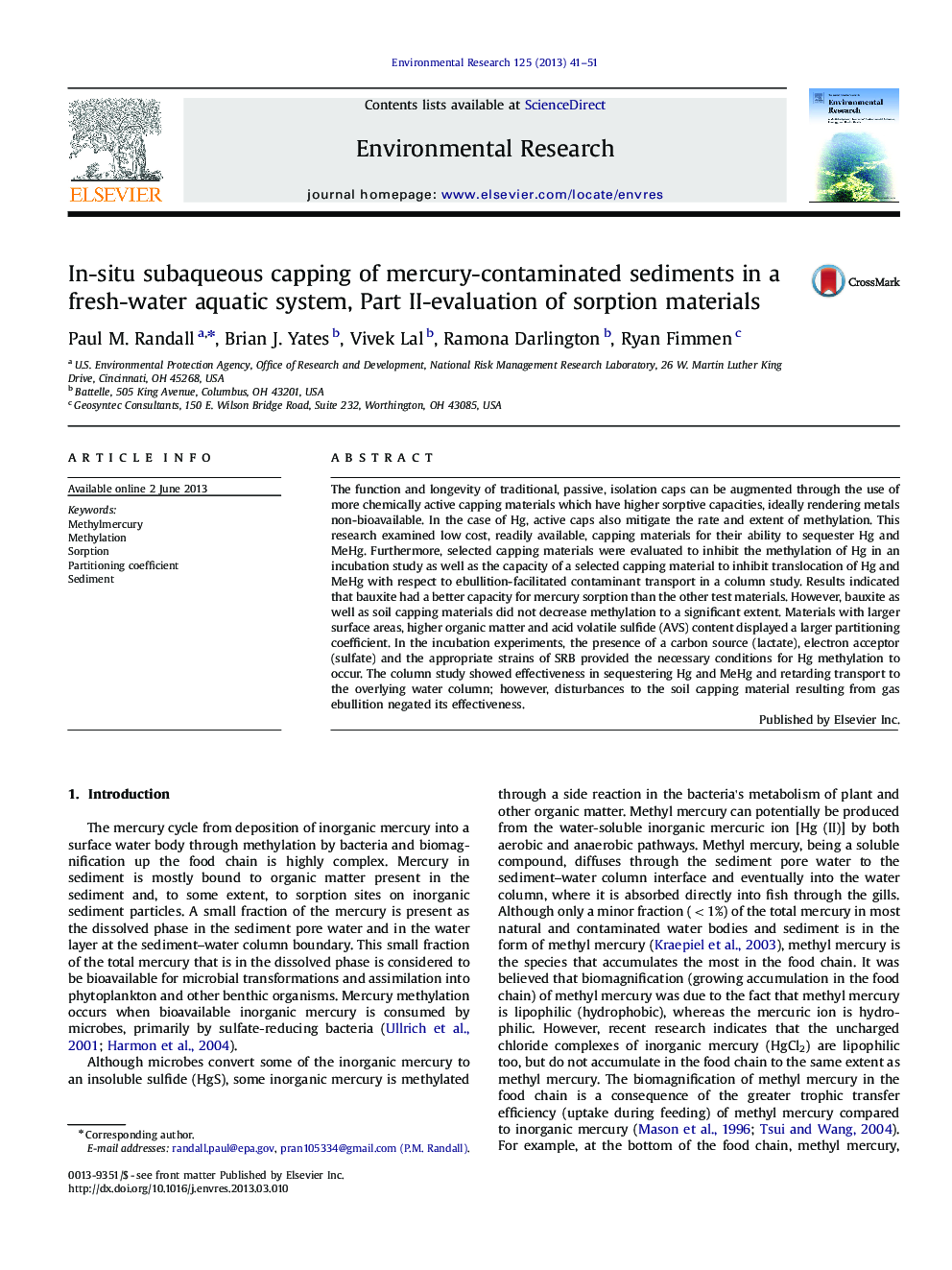| Article ID | Journal | Published Year | Pages | File Type |
|---|---|---|---|---|
| 4469843 | Environmental Research | 2013 | 11 Pages |
The function and longevity of traditional, passive, isolation caps can be augmented through the use of more chemically active capping materials which have higher sorptive capacities, ideally rendering metals non-bioavailable. In the case of Hg, active caps also mitigate the rate and extent of methylation. This research examined low cost, readily available, capping materials for their ability to sequester Hg and MeHg. Furthermore, selected capping materials were evaluated to inhibit the methylation of Hg in an incubation study as well as the capacity of a selected capping material to inhibit translocation of Hg and MeHg with respect to ebullition-facilitated contaminant transport in a column study. Results indicated that bauxite had a better capacity for mercury sorption than the other test materials. However, bauxite as well as soil capping materials did not decrease methylation to a significant extent. Materials with larger surface areas, higher organic matter and acid volatile sulfide (AVS) content displayed a larger partitioning coefficient. In the incubation experiments, the presence of a carbon source (lactate), electron acceptor (sulfate) and the appropriate strains of SRB provided the necessary conditions for Hg methylation to occur. The column study showed effectiveness in sequestering Hg and MeHg and retarding transport to the overlying water column; however, disturbances to the soil capping material resulting from gas ebullition negated its effectiveness.
